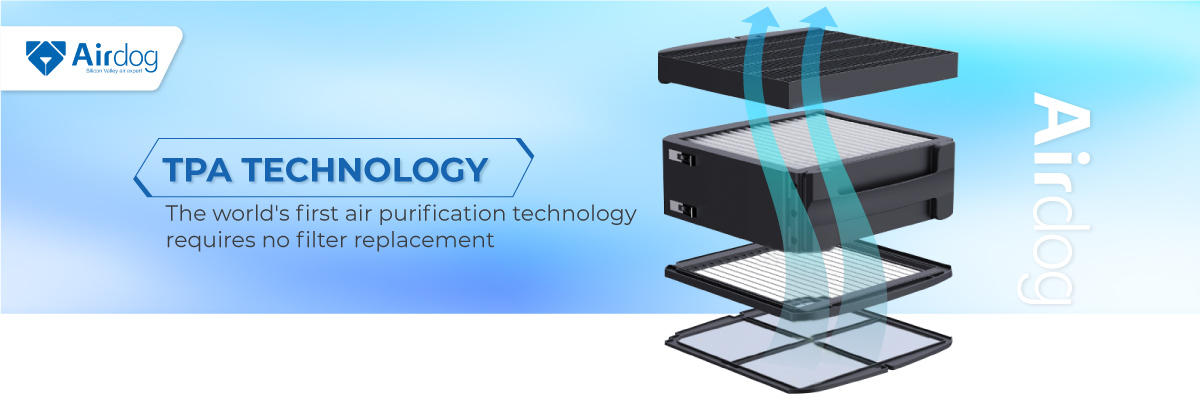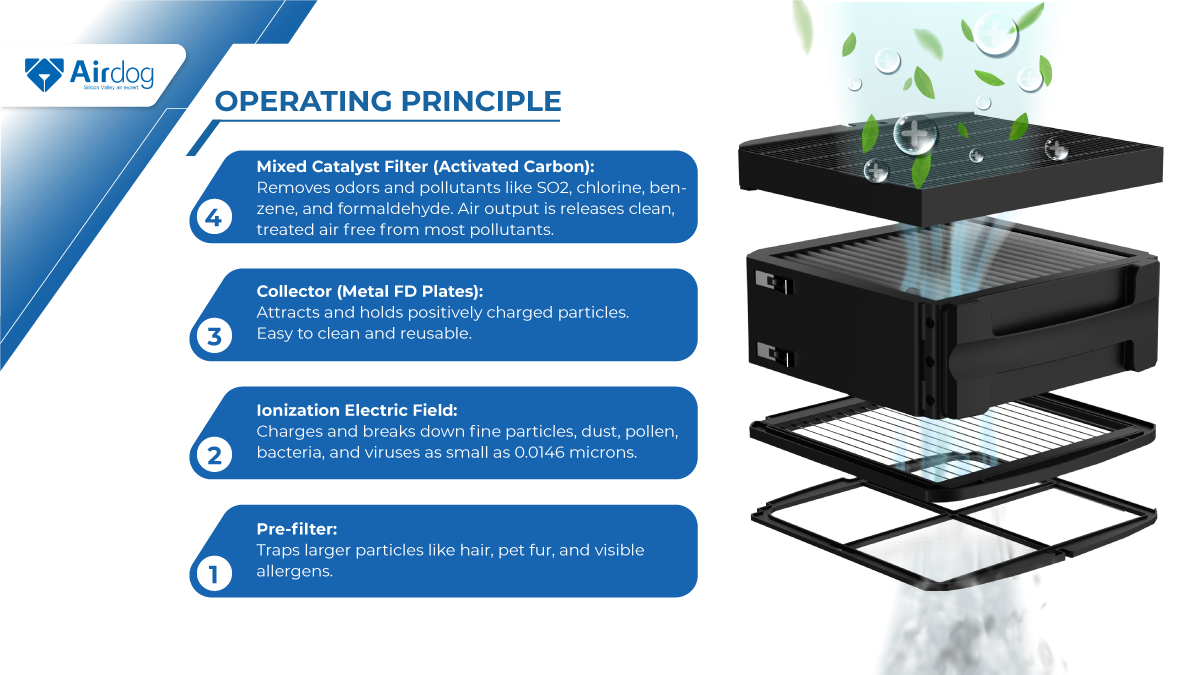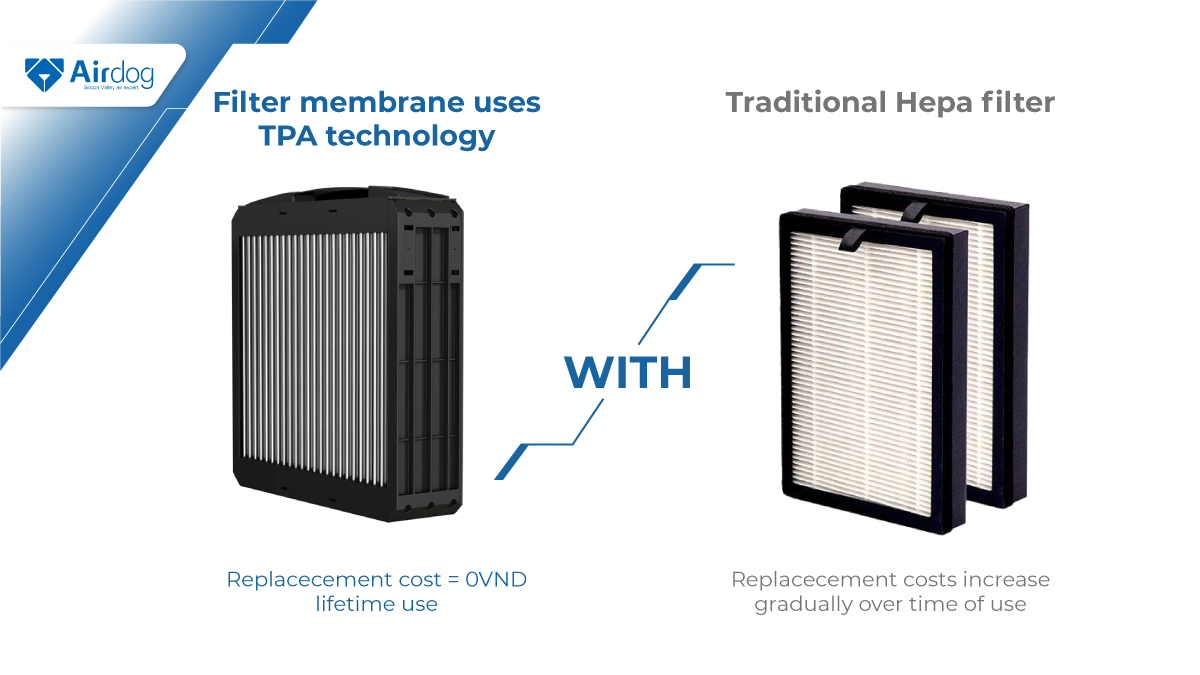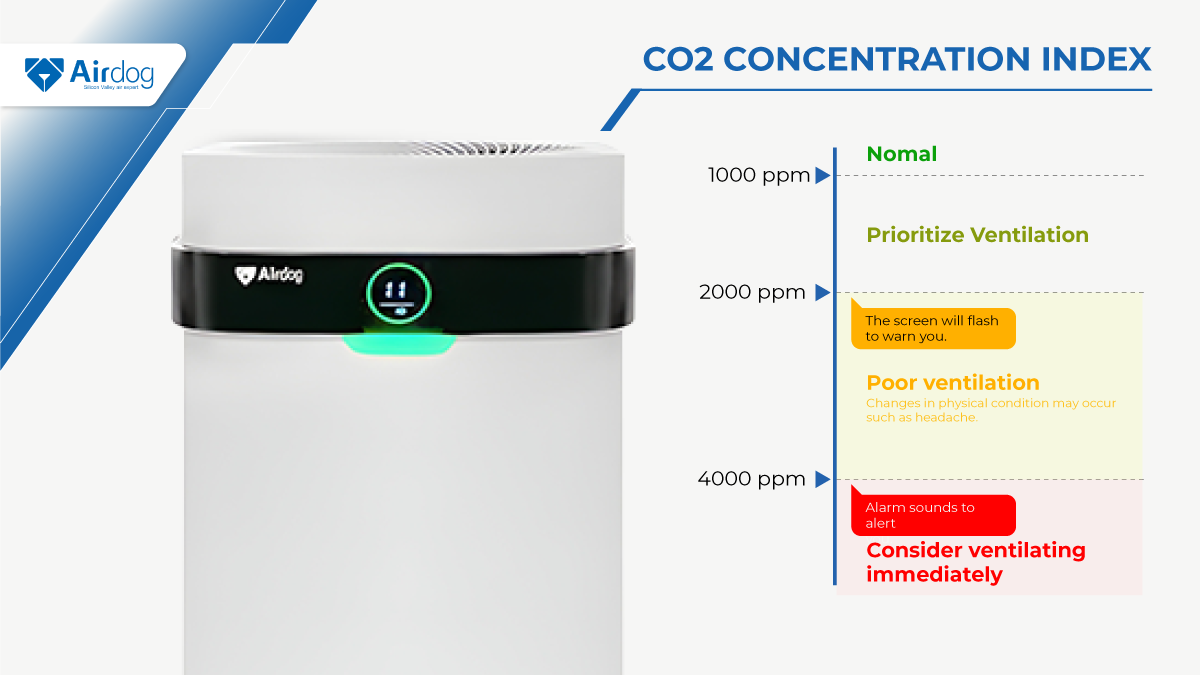
Unlike HEPA filters, which are tightly packed fiberglass fibers that trap dust particles and require regular replacement, Airdog air purifiers use TPA (Two Pole Active) technology with washable filters. This saves a significant amount of time and money while reducing environmental pollution.
This advanced feature makes TPA technology one of today’s leading air purification technologies. It offers fast and thorough filtration with a unique upright tray design that does not obstruct airflow, ensuring continuous air circulation while maintaining quiet operation. This is a distinct advantage over traditional filters that users should pay special attention to.
Introduction to TPA Technology
TPA technology is a revolutionary air purification technology developed by talented Silicon Valley, USA engineers. Using TPA technology, The Airdog air purifier provides a groundbreaking air cleaning solution, differing from older air purifiers with limited cleaning capabilities and requiring filter replacement.

TPA filtration technology stands out with its lifetime reusable filters, requiring no periodic replacement, and achieving effective filtration of fine dust particles as small as 0.0146 microns. This is precisely what many air purifier users have been longing for.
Operating Principle
Air is drawn in and flows from bottom to top. After passing through the pre-filter, larger particles like hair, pet fur, and visible allergens are completely trapped. Smaller particles then pass through the ionization electric field, where a strong voltage positively charges harmful fine particles, breaking down and almost destroying pollutants such as dust, pollen, bacteria, viruses, and other airborne pathogens as small as 0.0146 microns. This prevents the spread of airborne diseases and fine dust particles from entering the lungs and impacting health.

The fully neutralized harmful particles then pass through the collector, made of quick-drying metal FD plates. Here, a negative charge attracts and tightly holds the positively charged bacteria and viruses, preventing them from being released back into the environment. The collector is easy to clean with water and can be dried and reused like new.
Finally, the treated air passes through a mixed catalyst (activated carbon filter) to remove all odors and other pollutants such as SO2, chlorine, benzene, and formaldehyde. This operating principle demonstrates that while other technologies only collect dust and pollutants in the filter, TPA technology actively destroys most pollutants before collecting residual debris in the collector.
Maintaining Stable Performance
When comparing TPA technology and HEPA, we see that HEPA technology’s air cleaning efficiency decreases over time. In contrast, TPA technology in Airdog air purifiers maintains stable air cleaning performance over time, with only a minimal, insignificant decrease throughout the product’s lifespan.

Cost Savings
Depending on the usage environment, HEPA air purifiers require new filters to continue normal operation after some time. However, TPA technology air purifiers only need one filter, which can be used for life. Instead of spending money on replacements, you simply remove the filter, clean it with water and common detergents, dry it, and reuse it. Upgrading to Airdog air purifiers with TPA technology instead of HEPA that requires periodic filter replacement will save you significant maintenance costs.

Environmentally Friendly
Due to its reusable filter, Airdog contributes to preserving the global environment. Instead of disposing of hard-to-decompose fiberglass HEPA filters, Airdog users need only perform simple cleaning procedures to continue using the filter.

Ultra-Low Noise
With a noise level of approximately 21.2 dB in sleep mode, Airdog air purifiers using TPA technology generate noise only as faint as falling leaves. It is challenging for the human ear to detect at this noise level even in the quietest environments like libraries or bedrooms. This ensures that the fresh air protects your sleep, and the quiet operation helps you easily drift into sleep.

Smart Operation
The AQI CO2 index sensor is a critical factor enabling AIRDOG to analyze and report air quality intelligently. Four notification levels correspond to four colors: green, yellow-green, yellow, and red. Green (AQI < 50) indicates air quality is safe for health. Yellow-green (50 < AQI < 100) indicates moderately acceptable air quality. Yellow (100 < AQI < 150) indicates moderately polluted air quality. Red (AQI > 150) indicates severely polluted air quality.

All Airdog air purifiers apply advanced TPA technology without high maintenance costs, opening a new era of quiet, efficient air purification, and cost savings for users.

Comparing TPA and HEPA Filtration Technologies
TPA technology uses active filtration methods, detecting and destroying particles, dust, and smoke in the air, surpassing the passive filters of traditional air purifiers. It can absorb particles 100 times smaller than PM2.5 dust. Harmful particles such as dust, bacteria, viruses, and mold as small as 0.0146 microns are positively charged by the wire frame and destroyed by an electromagnetic field. The debris of these harmful particles is then attracted to the negatively charged collector, which can be washed with clean water and reused. This saves costs and prevents the air purifier from becoming clogged with harmful substances over time, avoiding filter overload and ensuring better airflow and quieter operation.

In contrast, HEPA filtration technology uses passive methods where dust, bacteria, and viruses are trapped in ultra-small filter pores (0.3 microns or larger), limiting their ability to clean air pollutants effectively. HEPA filters need periodic replacement every 3-6 months, leading to significant long-term costs.
In summary, compared to HEPA technology, TPA technology saves costs and avoids the risk of clogged filters, ensuring unrestricted airflow and quiet operation of the air purifier.


